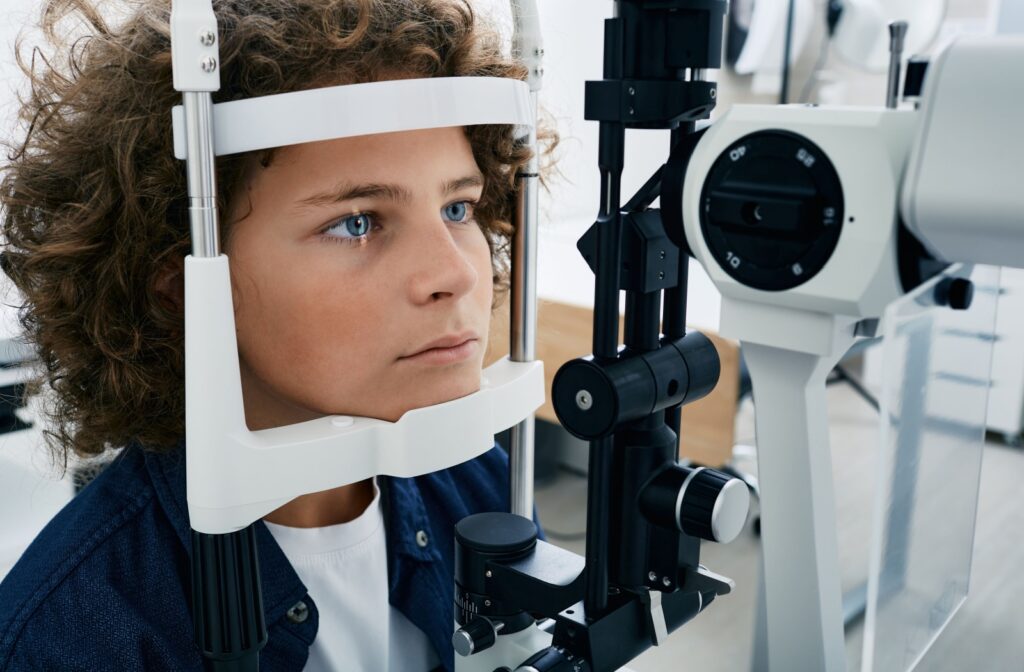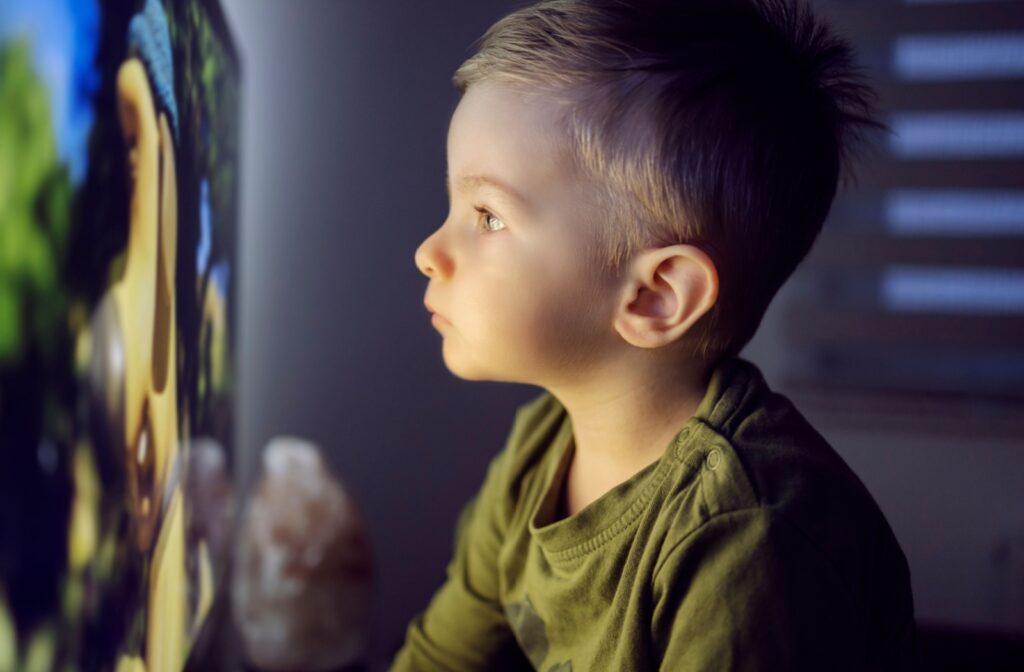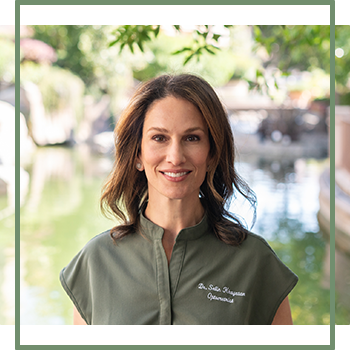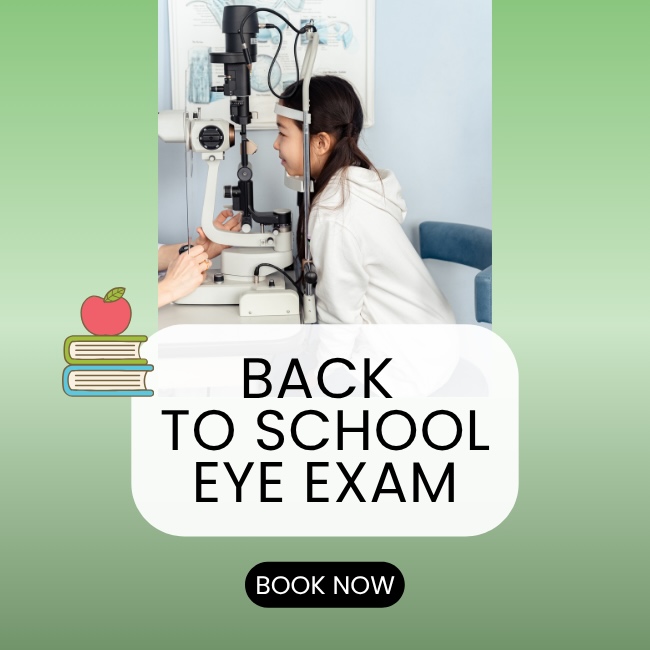You might not notice it right away, but small changes in how your child sees the world, such as squinting or sitting closer to the TV, can be early signs of myopia. Also known as nearsightedness, this common condition often begins in childhood and tends to progress as the eyes develop.
While genetics can influence whether a child develops myopia, daily habits and environmental factors play a major role in how quickly the condition progresses. Increased screen use, limited time spent outdoors, and even how a child reads or studies, can all affect their vision over time.
With regular eye exams and personalized myopia control options, you can help your child enjoy clearer, more comfortable vision as they grow.
Prevention & Treatment
While genetics and environmental factors can play a role in the development of myopia, you can still take proactive steps to help reduce the risk or slow its progression in your child. Simple daily habits can support long-term eye health and enhance overall well-being.
Here are some helpful strategies:
- Limit screen time, and use the 20-20-20 rule: every 20 minutes, look at something 20 feet away for at least 20 seconds.
- Increase outdoor time, particularly during daylight hours.
- Use appropriate lighting when reading, studying, or working on a screen.
- Incorporate more movement throughout the day and minimize extended periods of sitting still.
If your child is diagnosed with myopia, several treatment options are available. These may include Corneal Refractive Therapy (CRT), myopia control glasses, MiSight® 1 day contact lenses, or low-dose atropine drops, which have been shown to help slow the progression of myopia in children.
For adults, myopia is typically corrected with glasses or contact lenses, and in some cases, laser eye surgery may be an option, depending on the person’s eye health, lifestyle, and vision goals.
Factors Behind Myopia Progression
Genetics
Myopia often runs in families. Children are more likely to develop the condition if one or both parents are nearsighted. Research has identified multiple genes related to eye development, and variations in these genes may increase a person’s risk of developing myopia.
That said, genetics alone cannot explain the sharp global increase in myopia cases. Environmental and behavioral factors are now recognized as significant contributors as well.
Age
Myopia most commonly develops in childhood, especially between the ages of 6 and 14, when the eyes are still growing. The condition often continues to worsen during the teen years, particularly during periods of rapid growth.
This progression is linked to the elongation of the eyeball, which causes light to focus in front of the retina instead of directly on it, resulting in blurred distance vision. In most cases, progression slows and stabilizes in early adulthood.
Environmental Factors
Modern digital lifestyles are thought to be a major factor in the rise of childhood myopia. Increased screen time and limited outdoor activity have become common, especially with the rise of remote learning and entertainment.
Spending more time outdoors has been associated with a reduced risk of myopia. Natural daylight may help regulate eye growth, which is why many optometrists recommend incorporating outdoor play or activity into a child’s daily routine.
Lifestyle Habits
Habits involving long periods of close-up work, such as reading, studying, or screen use, can contribute to eye strain and may play a role in myopia development. Without breaks, this visual demand can cause fatigue and encourage changes in the eye’s shape over time.
Low light conditions while reading or using digital devices can add to this effect. Inactivity may also be a factor; studies have shown a connection between a lack of physical movement and a higher incidence of myopia in school-aged children. Regular activity and screen breaks are both important for visual and general health.

The Role of Eye Exams in Managing Myopia
Regular eye exams are key to detecting myopia early and monitoring changes over time. Children’s eye exams can begin as early as age 2, allowing us to evaluate how your child’s eyes are developing and whether they’re at risk for progression.
Early diagnosis can help guide timely treatment, which may include options specifically designed to slow myopia. These exams assess more than just vision—they offer a full look at eye health and may reveal other conditions that affect how clearly and comfortably your child sees.
Making routine eye exams part of your family’s health habits supports stronger vision and healthier eyes at every stage of life.
Take the Proactive Step Toward Clearer Vision
Understanding what causes myopia to worsen is an important first step in protecting your child’s long-term vision. While genetics may influence their risk, everyday habits, from screen use to time spent outdoors, can significantly impact how quickly their eyesight changes. At Visual Expressions Optometry, we’re here to support your family with an elevated experience, expert guidance, and personalized myopia management options. If you’ve noticed signs of vision changes or want to take proactive steps, we invite you to book an eye exam with our experienced team. Together, we can help your child see more clearly and confidently as they grow. Book your appointment today.




